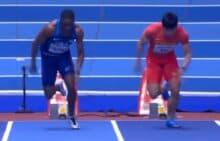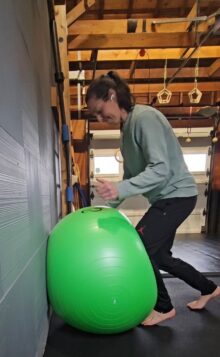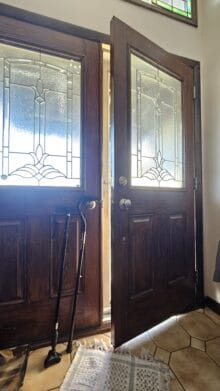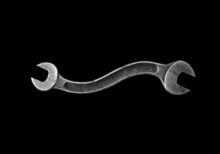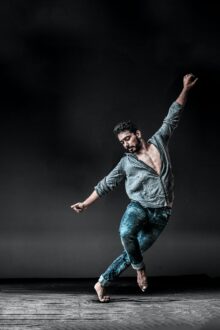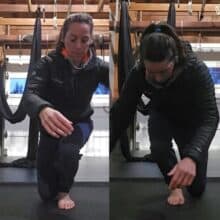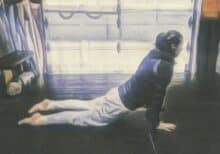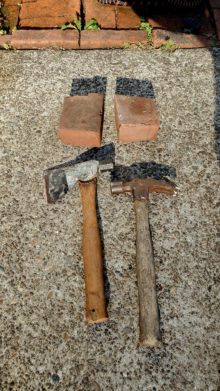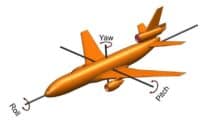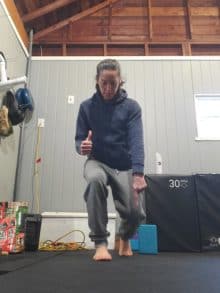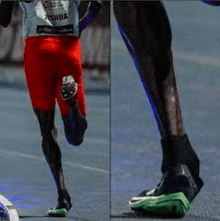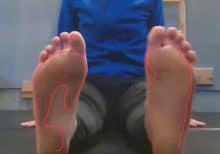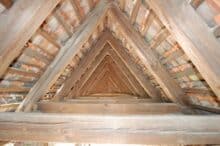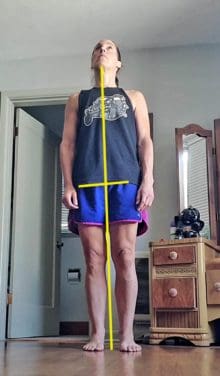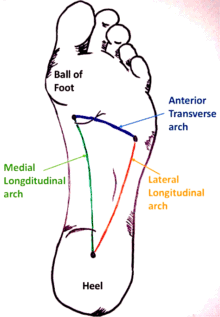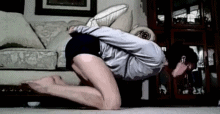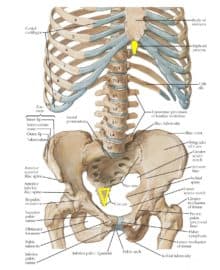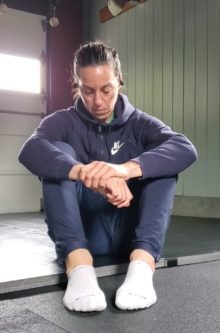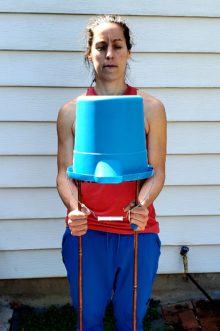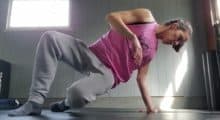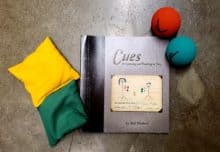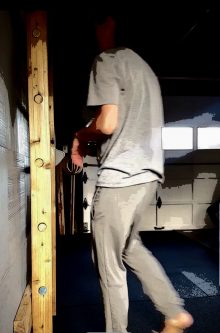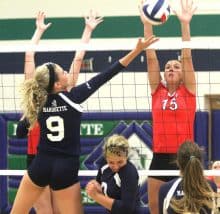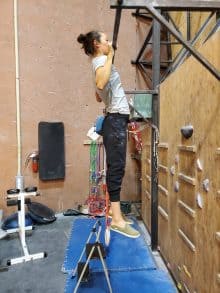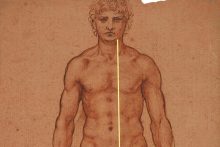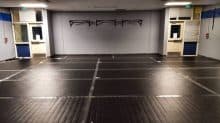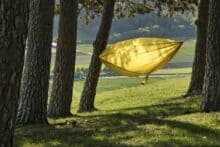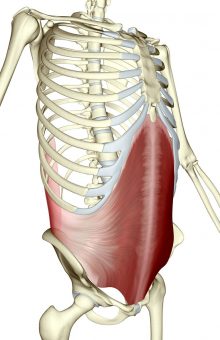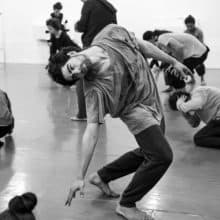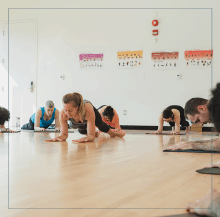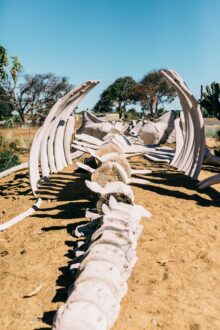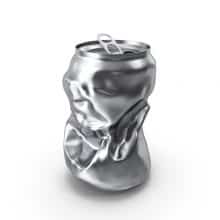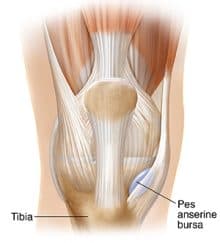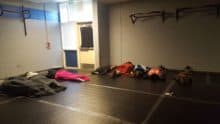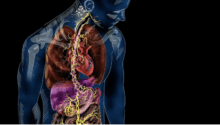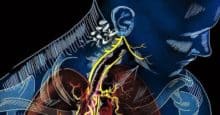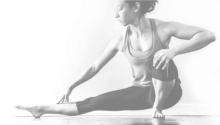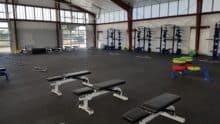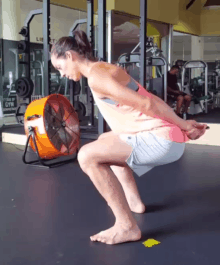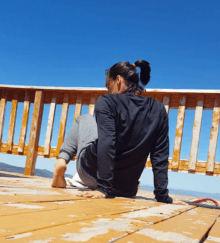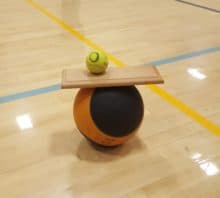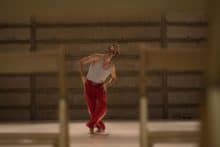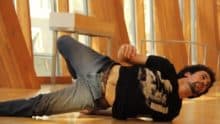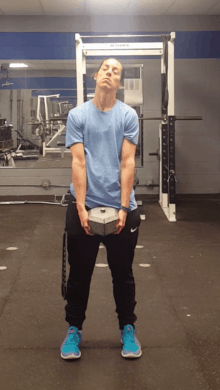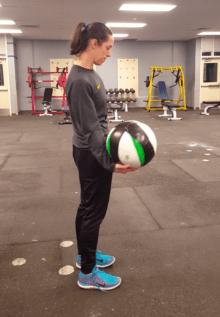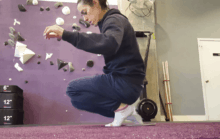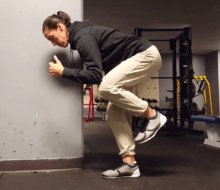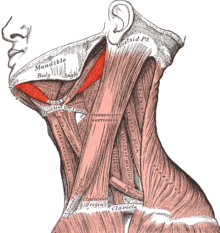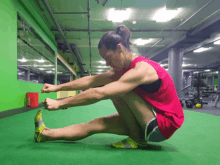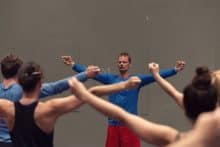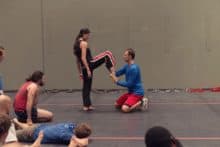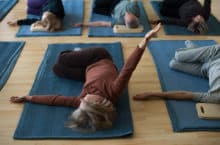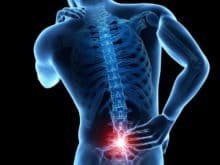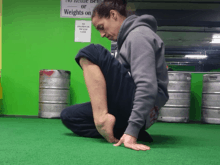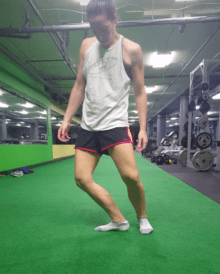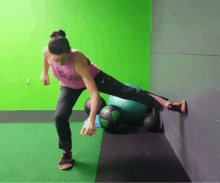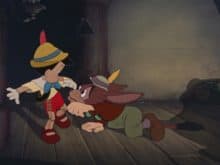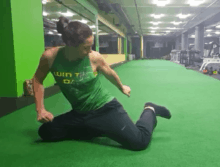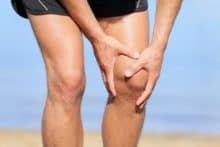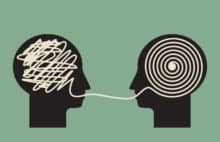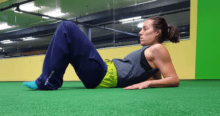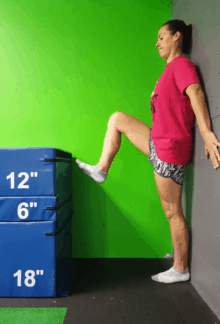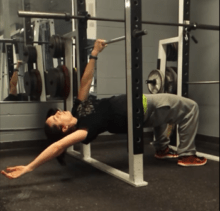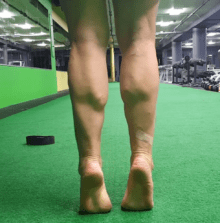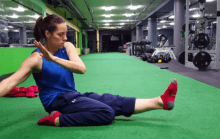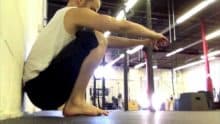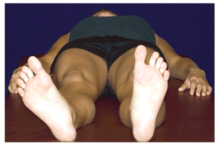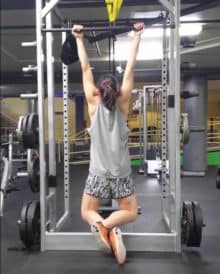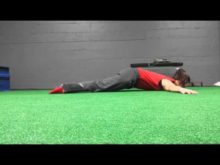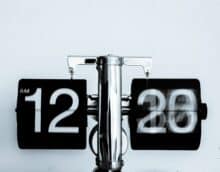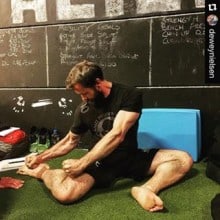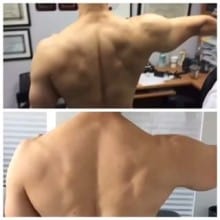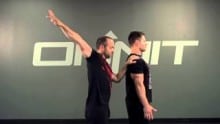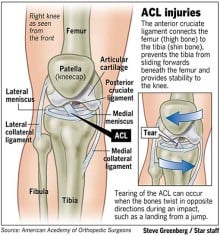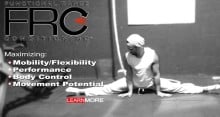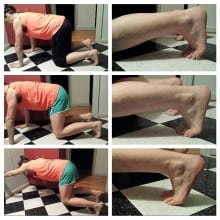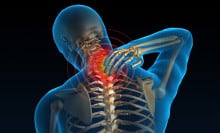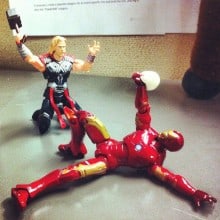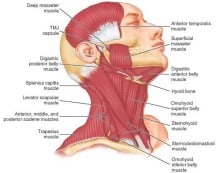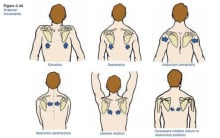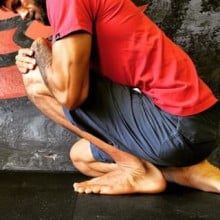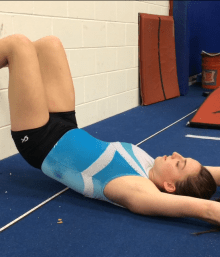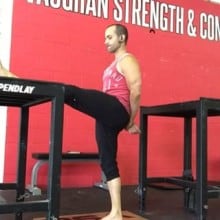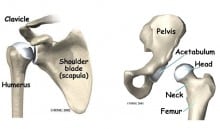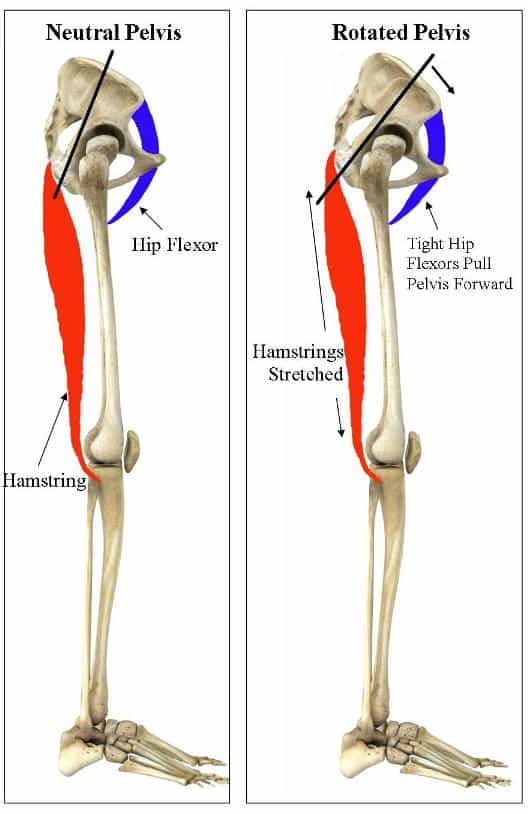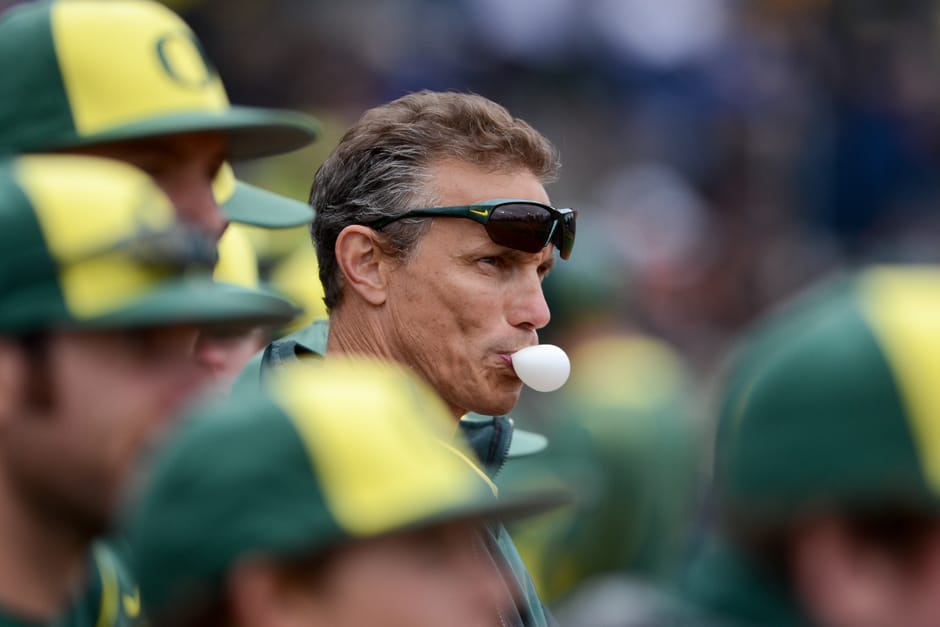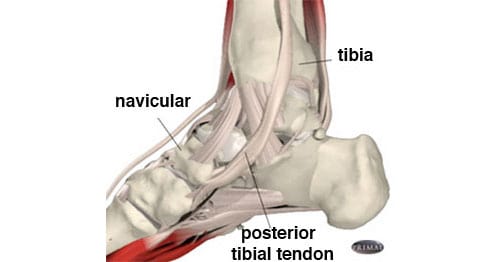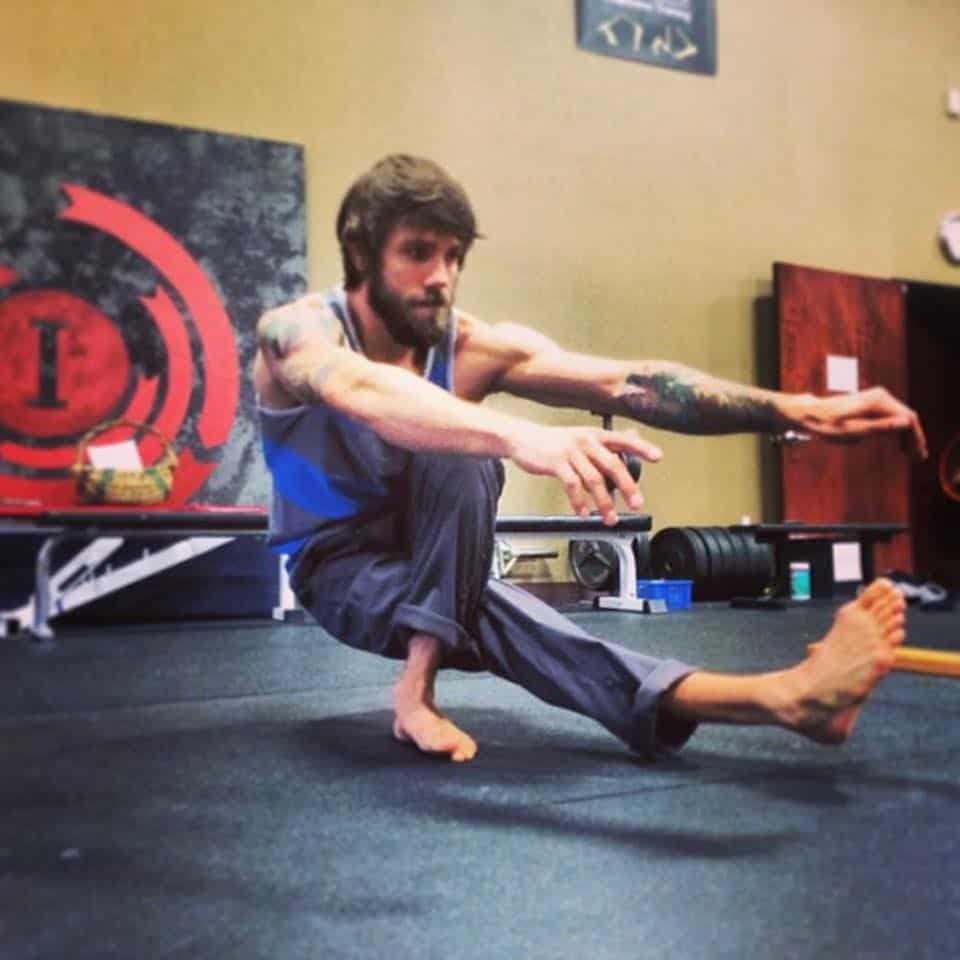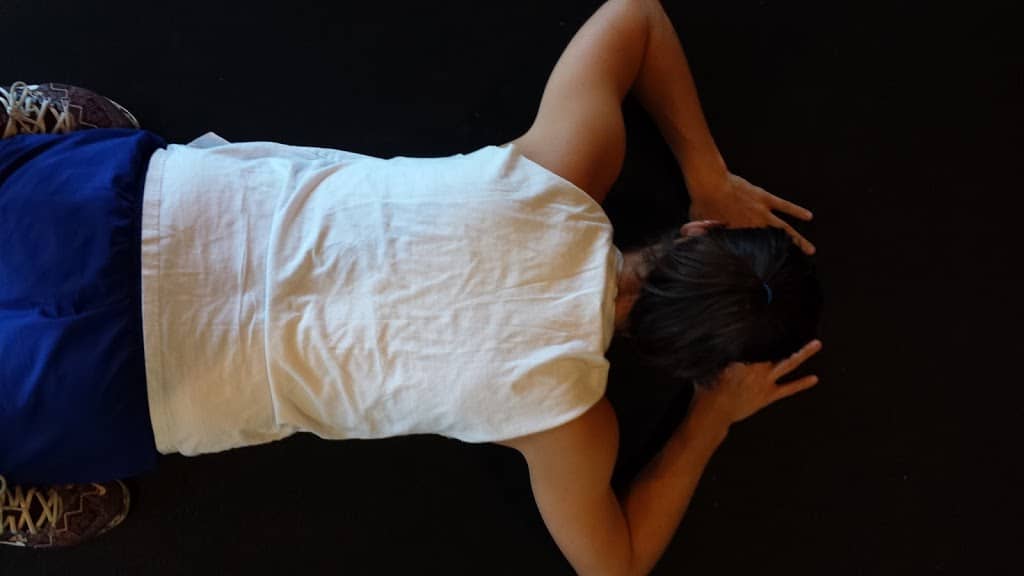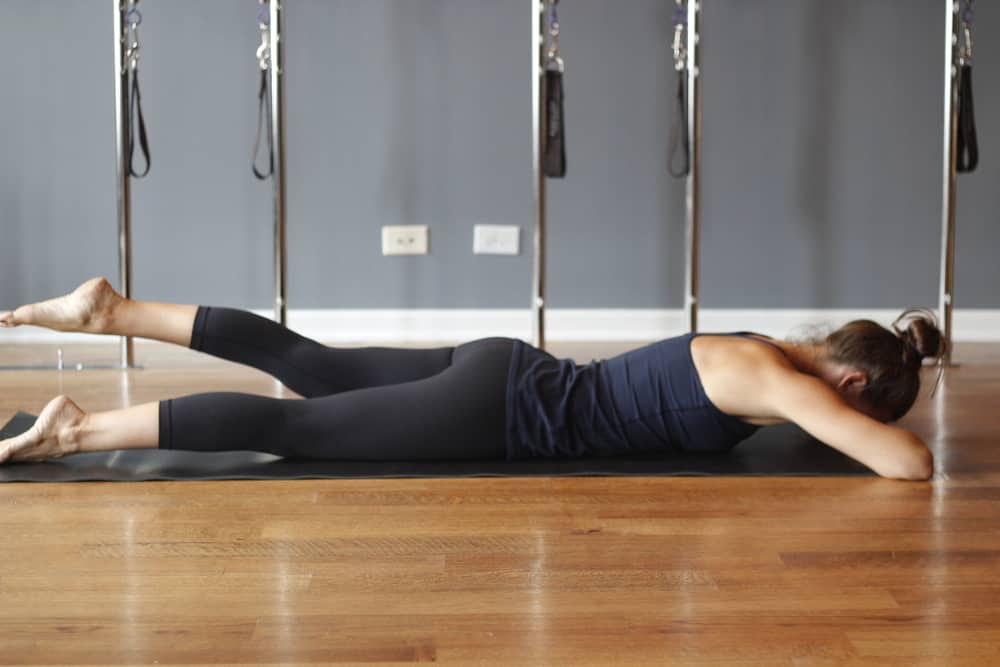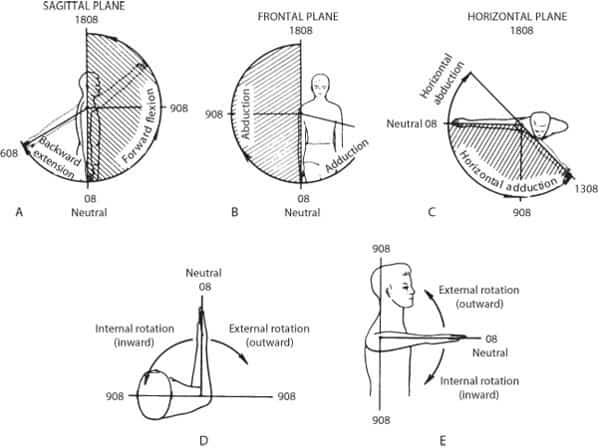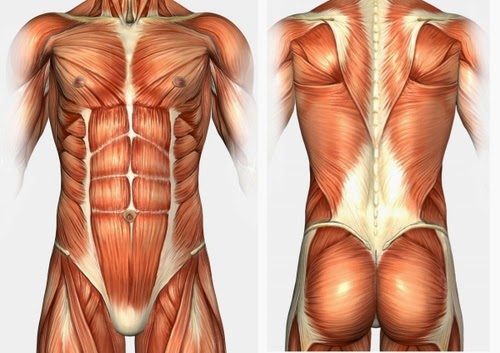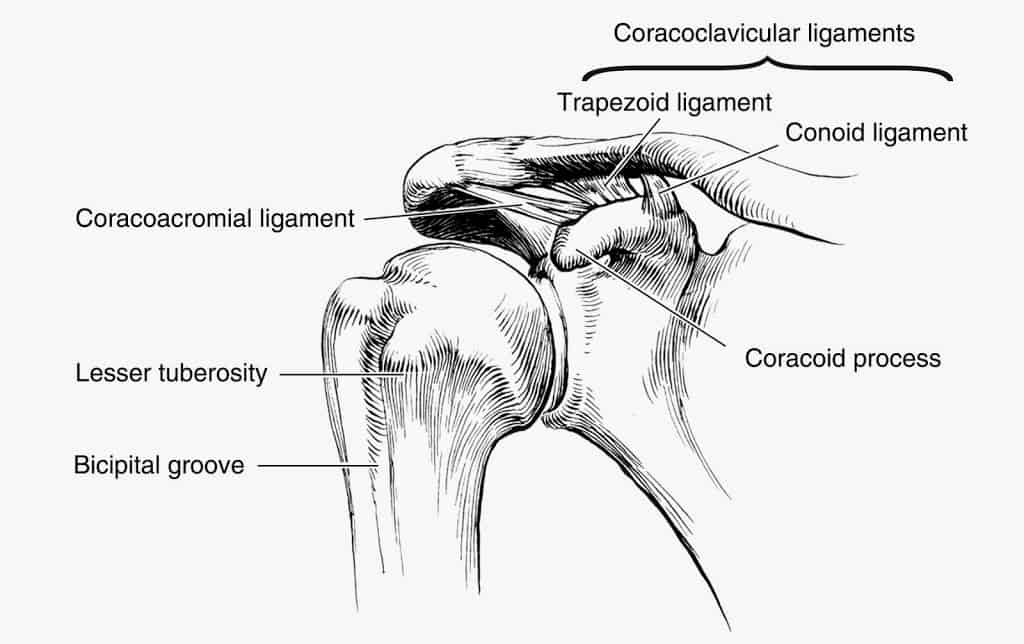The only mental to physical bridge I will use in this post is that when your movement and your life are aligned, when they reflect the same themes and sentiments, you cannot help but see application and connection to everywhere… Read more ›
Alternative Title: Describing the Avoidant Half I have been writing about asymmetries for some time. Whether it be determining the up leg from from down leg, or the pitfalls of detorsioning the system, I continue to find and… Read more ›
Asymmetry. Up Leg. Compression. Push Down. Space. Rotational Organization. These all describe the physics of one half of the body accepting load, and one half of the body avoiding load. The first time I wrote about this, I referred to… Read more ›
In my athlete days, which ended about 15 years ago, the goal was to NOT feel and just complete the tasks put to paper. It was something I was given or sought out — “more” was agreed upon by all… Read more ›
The first post in this series asked if a pigeon toe was friend or foe. It is certainly a strategy, an adaptation that has a purpose. For me, my half with the pigeon toe also carried my biggest problems, particularly… Read more ›
Oh, the mighty pigeon toe. Such a strange little insurgent, and yet, it exists peacefully all around us. Where does it come from and how does it form? Does it afflict one leg or both? Is it the tibia or… Read more ›
Part 1 of this series explained how knee should not be used as a load-bearing joint. Part 2 showed how pressuring the knee can help build safety, alignment, and desired force at the desired time. This third and final segment… Read more ›
In part 1, I suggested that using the knee as gas instead of brakes could help free up the knee for motion and elicit the hips and ankle-foot as stabilizers. For folks with chronic pain, however, their nervous system likely… Read more ›
There are three hinges on the feature photo door. It’s a strong front door, solid and meant to take some battering. The cheaper, lighter, all-have-problems-closing-and-opening doors inside the house have only two hinges. Weight-load divided by two, or weight-load divided… Read more ›
Torsion. We all have it: a particular line of twist running through our carriage, gripping us in a certain way and keeping us upright. Each fold and joint tells its story, whether you realize it or not. It’s how we… Read more ›
At its core, this get together was a homage to Adarian Barr. It was about curious and capable mortals grasping at genius, and that genius laying out his latest findings and figurings in a simple yet thorough process of feeling and… Read more ›
Part One of this series looked at how taboos with genital region issues normalize them. Part Two investigated how anatomy shapes action. This third and final installment hopes to outline some systemic patterns that might feed into pelvic floor dysfunction.… Read more ›
My previous post got into the shame and embarrassment that prevents many of us from addressing issues with parts connected to sex or excrement. This one is more objective, looking at anatomy and physics. When you seek to understand the… Read more ›
This feature photo shows an unstaged photo of the top drawer of my filing cabinet in my locker room office. Note the bounty of certain items (that aren’t snacks). Shorts, pads, some extra underwear — all tell tale signs… Read more ›
I define performance for the purpose of this article as, “the peak execution of a skill at a particular point in time.” Though sometimes cooperative, there is most often an element of competition involved. For most athletes and artists, the… Read more ›
Part One looks at identifying each leg and how each prioritizes a different foot arch. Directional Bias: Perpendicular vs. Parallel. Up leg works the foward and back (parallel to ground). Down leg works the up and down (perpendicular… Read more ›
To recap Part One: Create a sense of intrigue Provide multiple points of entry Establish pockets of safety Ask instead of assume This sh*t’s hard (which is why so few do it) After the weight shift lesson , three of… Read more ›
When planning a lesson that is skills based, you must account for multiple points of entry. In public education, everybody and every body must be able to find some success. You also must be able to do what you are… Read more ›
While walking through the streets of Europe last Spring, Adarian Barr wondered why his feet felt so good. He traced it back to the cobblestones. The lift, the variability, the multiple points of potential folding. This was the impetus behind… Read more ›
When new words are introduced, we tend to react as if they make things more complicated. We already know. We already have an understanding on what the terms we already use mean. Why would we change? We change when we are… Read more ›
Pairs. Roles. Asymmetry. The body knows and the body has ways. Understanding the differences between the halves helps you appreciate them. One side isn’t ‘good’. The other isn’t ‘bad’. They hold a function within the system. Here’s a big picture… Read more ›
Flexion and extension. Compression and Suspension. There are pairs that govern movement, both globally and locally. The system and its parts act to pull apart and come together. Posture, moving fast, and any sort of training or exercise is versed… Read more ›
This piece serves as the follow up to How To Push Down. When we are talking about compression, we are also talking about tension. It is the interaction of these two push-pulls that creates suspension. Otherwise everything would collapse. … Read more ›
My left leg has some problems. I could fill in the whys with any number of stories — the many ankle sprains during my athletic career, the torn and hamstring-repaired ACL, the pigeon toe I gave myself because of a… Read more ›
Adarian Barr does this thing. Well, first he does his thing — take a snapshot of what is going on in a way that only he seems to notice. Then he’ll send it to me without words and see what I… Read more ›
This post serves as a follow up to: A Path Towards Harm. Otherwise titled: The things I did wrong when I didn’t pay attention or have compassionate patience. The tag to this blog used to read, “fix yourself.” But… Read more ›
Some context. I have been learning to be sensitive to signals of and mitigate pain for about a decade now. My training revolves around feeling things out, noticing any off-ness, spending some time and attention there, and finishing the session… Read more ›
Push down. Seems simple enough. Intuitive. But I got it wrong. I got it wrong because my posture and mechanics favored a front-side dominance. (Quad-dominant folks tend to also fall into this category.) The knee bend, rounded shoulders, and dropped… Read more ›
This post serves as a companion piece to A Non-Central Axis. Where it showed you ways to identify a shifted midline, the following hopes to show how pulling to the right or left affects performance. The first thing to… Read more ›
Photo by Linus Nylund on Unsplash I am very quick to sort information. I try not to bias it from the source. What is interesting becomes useful when you know what to look for and how to apply it… Read more ›
Everything I know about the transverse arch, I owe to Adarian Barr. The following is my attempt to take his words and concepts and relate them to my own body and understanding. It is, in effect, my translation. The layers… Read more ›
The two bowls of the torso work in relation to one another. The ribs act as an upside down bucket and psoas sticks. The pelvis acts as as a rotary basin with hip handles. Should they be able to freely… Read more ›
I received an email from Daniela Welzel, whom I do not know. It was obviously of the bulk variety, not even a name in the greeting, and it touted its magnitude and asked if I was interested. I didn’t know… Read more ›
A year ago, I published ‘Dead Ribs‘, documenting the neglect of my ribcage in favor of my pelvis. Other than examining lateral movement, the breakthrough there was that to open the ribs I could lengthen through the front rather than… Read more ›
Paying attention brings awareness that paves the way for learning. While the task of directing attention typically goes to teachers, the chore of controlling attention falls on the student. We are bored by things that don’t seem to apply to… Read more ›
A quick conceptual piece from the mind of Nicole Uno. Like many sensational metaphors she offers me, I cannot quite make sense of things until I feel it’s application and usefulness. Instead of trying to force the issue, I typically… Read more ›
This hurts. The most common reaction is to stop using it or doing that. It’s even the advice of many medical professionals. Rest, it is assumed, is a cure all. But what happens when this magic pill doesn’t work? When… Read more ›
If something is stable, it can accept more than itself. Adding load then, signifies a sureness of support — a confidence in the structure of self. Though often treated as static, the load, structure, and interactive adaption to stress is… Read more ›
The following video drummed up tons of interest in Bal-A-Vis-X over the past year: It’s how I was made aware of it. I was tagged via facebook, twice. While certainly intriguing and catchy, these edits of action do not… Read more ›
For the better part of a year, Nicole Uno has been offering me her insights on movement. There have been a few big picture concepts that have completely shifted my perspective (I’ll re-link these at the end), but perhaps the… Read more ›
With every joint that flexes (and extends), there is an element of rotation attached. Three hundred and sixty moveable joints times multiple degrees of orientation at each makes for an almost unfathomable number of alignment options. Much moreso than correct… Read more ›
For many reasons and convergences of fate, I recently took on the assignment of coaching high school volleyball. It was a sport I knew very little about and had the least experience coaching and playing. It was also a position… Read more ›
Pullups. The bane of every chubby kid’s existence. We were strong, just not relatively strong. We liked to stick what we were good at, which was moving things other than ourselves. Eventually my weight leveled out and I was drawn… Read more ›
This is another concept coming from the astute observations of Nicole Uno. The medical, fitness, and wellness worlds are fixated on correcting imbalances. Amidst all the readily available treatment plans, too few remain curious about why so many asymmetries… Read more ›
Thematic teaching offers an umbrella students can return to to make their own connections. It provides a constant amidst the chaos to formulate conclusions and test variables against. Stepping back and trying to see the bigger picture of my classes,… Read more ›
Slings. I’ve heard them referred to often, but never quite knew what they were or why they were important. I understood that they were anatomically determined lines within the body, but in a structure that is fully connected, it didn’t… Read more ›
As I am learning to access and mobilize my ribs, I have begun to understand and control the deep inner workings of my trunk, particularly the space between the ribs and pelvis. One might think of this as the shortest… Read more ›
Part one of this series looked at the more physical elements of the “Weightlessness” workshop, and revealed the wonderful surprise of walking away with better knees. Part two will attempt to unveil the method behind the artistry of making a… Read more ›
Cecily Milne is the mind behind yoga detour, movement education that encourages the yoga population to go beyond ‘nailing poses’. She immediately reminded me of Marlo Fisken – a “pole person” who’s actual draw is that she is a brilliant… Read more ›
My pelvis has been my focus for the better part of a decade. Plagued by low back pain and steely hamstrings, I discovered that I was stuck in anterior tilt. Learning to posterior tilt both felt and functioned like… Read more ›
This is the second post taken from the mind of Nicole Uno. It is a continuation of the first, explaining Rotational Organization. For the most part, we are floating. Skating and tip-toeing off the ground because we can. We have… Read more ›
My relationship with my knee goes in waves of excellence and issue. In periods of calm when things are swell, I enjoy and explore freedoms and push the boundaries of performance. Preferring to walk the unrestricted line of what is… Read more ›
Interest dictates pretty much everything. It is the neck that turns the head and keeps curious eyes fixed. At its most illuminating and significant, it attracts the onlooker into their own inner workings. Believe that you are both interesting and… Read more ›
The following is part two of my course notes and findings from Stress, Movement, and Pain. As practitioners seeking to help bio-psycho-social organisms, we have to be able to read, analyze, and gather information from all three dimensions. The… Read more ›
The following is part one of my course notes and findings from Stress, Movement, and Pain. Linked through the perception of threat and cause to protect, Seth Oberst generously delivered on the hows, whats, and whys between sensation (or lack… Read more ›
The following is a glimpse into the mind of Nicole Uno (IG @unotraining). Rotational Organization allows for the simultaneous existence between contract and relax. Thoroughly simplified, consider two gears. There is an impetus of force and a corresponding area… Read more ›
A PE teacher on one side of the country texts her trainer pal on the other. “I was thinking of getting this textbook for my weightlifting class.” “Why do you need a textbook?” “So I have something to reference… Read more ›
For a long time, I believed that extension was the working opposite of flexion. They felt as contrary as they looked. Folding forward was natural and effortless. Folding back was a resistance to that ease. The struggle was a lesson… Read more ›
When assessing the lower leg, it has become common place to examine the foot. The pliable and separable toes receive much of the attention. The heel, strange and seemingly uninteresting, gets neglected. Considering the calcaneous is a starting point… Read more ›
Two years ago, I set to develop a “new” type of PE that looked outside the realms of sport and weight lifting. With the outliers as my muse, we set to examine movement with a larger lens — how one… Read more ›
Matan Levkowich is a dancer, choreographer, and martial artist. Another of the incredible Israeli movers, he is able to pluck out threads from all the worlds he has immersed himself in and deliver them in practical form. He first blipped… Read more ›
If you’re curious about why only half a workshop I’ll tell that story at the end. Tom Weksler’s Movement Archery workshop was a lesson in angular momentum. We rolled, we spun, we bruised our pointy bits. Imagine an archer… Read more ›
Movement expression is dependent on on our tadpole-like head and spine to drive and disperse motion. Any sticking points have a reverberatory effect on the actions of the limbs. After a decade of undoing the rigidity trained through athletics and… Read more ›
When I got my first chin up, I felt superhuman. Finally hitting that relative strength benchmark felt like a magic trick I was somehow involved in. Even more mystifying, though, is that I had absolutely nothing on a pronated grip… Read more ›
The low gait might be the truest test of healthy knees. It requires full flexion under full bodyweight while pulling the center of mass. A single knee is responsible for stabilizing load while the feet and ankles pivot and reposition.… Read more ›
Balance is a movement intelligence. It relies on systemic interdependence — that your parts work well enough and that the body can efficiently execute interpretations from the brain. Creating feet that grip and then utilizing them in skill-based, eyes closed situations bridges… Read more ›
Plagued by forward head posture and phone-down eyes, the act of tilting the head back can become unnerving. Used to being underutilized, the cervical spine has to be coaxed into believing extension can be a position of comfort. The shoulders,… Read more ›
I enjoy writing this blog. It helps me make sense of things. I can connect the dots and string the pieces together, ultimately braiding them into a larger understanding. I try to communicate as if I was asked what I… Read more ›
Joint ‘popping’ is a curious thing. It alarms without hurting. Especially when you realize it wasn’t there before. You notice something is different when you do that particular thing in that particular way. The different becomes ‘less than’ when… Read more ›
Engaging with your work demands a certain degree of ownership. There must be a benefit to the challenge presented, beyond just a hard-to-apply confidence. A task can serve as a test of will, a test of adaptability, and/or a test… Read more ›
Doing without knowing. Playing, creating, learning. Adjusting and adapting. Describing Fighting Monkey is an act in organizing verbs. Everything overlaps and intertwines and is a wonder. The only certainty you are left with is that you have experienced something good… Read more ›
In a top floor studio space that felt more like a cozy attic, I had a revelation. A soft-spoken yet commanding gal led me into my own body with an almost story-time cadence and tone. Knowing I was new, she… Read more ›
Issues with joints or body parts can almost always be traced back to usage. When faced with a familiar task in a familiar environment, our habitual patterns of movement follow a particular chain of command. We clutch and are clutched… Read more ›
“I’m going to explore the depths of the ocean.” “You’re gonna what?” “I’m going to get into this magical pressure suit, close myself off to the known world, and look for cool stuff.” “Why would you want to do… Read more ›
Movement overlaps. Brain work = joint work = speed, power, strength, and coordination work. We have structures and we have capacities. Our practice establishes the abilities of both. There is a general consensus that if your parts work better you’ll… Read more ›
Body control is all the rage. A popular want is increasing active range of motion. People want to get there so they can do stuff there. Functional Range Conditioning uses slow, controlled movement to examine individual joints, build capacity in… Read more ›
Hip extension is a vital movement to both health and performance. Wellness wise, hips that can extend, coupled with an unstuck spine and pelvis that can naturally posteriorly tilt, means you likely don’t suffer from back pain. Power and speed… Read more ›
This post serves as a companion piece to Pain Exploration: Medial Knee. It picks up right where it left off, with manipulations of the ankle, foot, and toes. A low sit with the heel up and toes extended (an expression… Read more ›
Increasing dorsiflexion is a popular yet frustrating goal. Getting the ankles to do more lessens the strain on the knees, and is an important factor in being able to drop into a deep squat — an often used marker of overall… Read more ›
The vast majority of movements happen going forward. We reach, walk, look, and move toward what’s in front of us. Then we sit by pushing our butt backward. This front-to-back plane of motion (or stillness) is where we reside. Our… Read more ›
As practioners and coaches, teachers and students, we are constantly seeking out information to make us better at what we are trying to do. We stalk and search. If only we could see and know, then we could do. Despite… Read more ›
Pelvic motion and knee flexion influence hip rotation. Structures above and below a joint have a direct impact on the way it functions. For the hip, its surrounding articulations are the knee and the pelvis. Stiffness or motion in… Read more ›
For about two months, I’ve had some chronic discomfort in my left knee. On a scale of 1-10, with ’10’ being agony and ‘1’ being noticeable/annoying, it oscillates between 1 and 4. Though this might be thought of as acceptable… Read more ›
“Translation allows for otherwise separate entities to synapse and communicate.” I have been a teacher for thirteen years and a movement therapist for five. As I toggle through the two professions, an unlikely blend has taken place. I find… Read more ›
The pelvis speaks volumes. The position in which you hold it dictates whether or not you can use your abs, release your hip flexors, and/or likely have symptoms of back pain. It’s the first thing I check with new clients… Read more ›
We tend to move in ingrained patterns, within the same degrees and utilizing the same amount of space. Thinking bigger about what a joint is capable of doing allows us to use it in ways we don’t, which often aligns… Read more ›
Sliding is one of the most fun ways to get from here to there. True to form, it’s also a sneaky little way to grasp an underlying understanding of movement. F=ma (force equals mass times acceleration) is explained in… Read more ›
Limitations in the wrist are the Achilles heel of push dominant training programs. Repeated gripping and hoisting of bars and bells turn the hands and wrists into one trick-ponies that get cranky when trying to press the body off the… Read more ›
Ah, gravity. The beautiful constant. 9.8 meters per second (squared) you can rely on again and again to hold you down. Many times we see it as our enemy, a hindrance to our speed and power. But in the world… Read more ›
The tip toes position is an assessment of toes, feet, and ankle control. Balance comes from joint stacking. The push off when we walk comes from a high heel. A toe point or push is required with reaching. Loaded plantar… Read more ›
Thirteen years ago, I had ACL reconstruction surgery using a hamstring graft. My tissues have long since ‘healed’, but the overall function still lacks behind my non-injured leg. Full flexion remains it’s biggest weakness. Here’s snapshot of the discrepancy in… Read more ›
feature photo credit: Dr. Andreo Spina Tibial rotation is necessary for keeping the knees in line with the ankles during a deep squat. It also greatly influences walking gait and joints of the knee, hip, ankle, and foot. Issue… Read more ›
featured photo credit: morphopedics.wikidot.com Stiff hips cause pain, injury, and lackluster performance. A freely rotating hip is likely to flex, extend, abduct, and adduct with ease. Restrictions with any of these movements can often be traced back to restrictions in… Read more ›
The mobile nature of the shoulders leaves them vulnerable to influence. The way we consistently hold them is the way they’ll stay. Slouched postures slumped over desks or protecting their personal interest in cell phones and video game controllers adapt… Read more ›
For any of you who have followed this blog for a while, the pelvis has been a long-standing fixation of mine. It has routinely been the deciding factor in moving better and getting out of pain (particularly low back pain). Boldy put, if… Read more ›
featured photo credit: @movnat instagram (Carlos Condit) The ground is a safe, secure place. It is not something to be avoided or stepped lightly onto. It can easily absorb our falls and placements and pressures. If we become afraid… Read more ›
For a very long time, my ability to do work was my defining feature. I needed to get stuff done to prove myself capable and worthwhile. When I was younger my Mom made us chores lists. She wrote them on… Read more ›
The one flaw in the Functional Range Conditioning system is its heavy use of acronyms. It has created a culture of separation, utilizing a language only understood within the context of the FRC group. Starting with CARs and developing into the… Read more ›
As someone who’s pretty much focused solely on joint/movement work for a while, my conditioning is far from what it used to be. I entered a no-dribbling 2-on-2 drill with some kids during class and my heart almost exploded. It… Read more ›
As examined in my previous post, joint function defines what kind of movements you are prepared to perform. Articular independence must come before articular interdependence. The ability to isolate a particular joint leads to more control, increased awareness, and lessening… Read more ›
The popular — and still conceptually relevant — joint-by-joint approach championed a decade ago lent logic to the idea that a problem that revealed itself in one area may be caused by dysfunction in another. There were stable joints, and there were… Read more ›
Controlled Articular Rotations (CARs) are the entrance point to Dr. Andreo Spina’s Functional Range Conditioning system: They are meant to: 1. assess joint health (particularly the function of the deep joint capsule) 2. maintain outer… Read more ›
I suffered a partial tear of my left ACL in 2003 during a rugby match. There isn’t a cool or gruesome backstory involved, just some open-field running with the ball. One cut and down I went. And stayed down. It… Read more ›
Functional Range Conditioning (FRC) is a system of creating, controlling, and expanding useable range of motion, defined as mobility. Unlike flexibility which is typically achieved passively, FRC uses tension and isometrics to minimize neurological safeguards that inhibit mobility in the… Read more ›
Yesterday, Guido Van Ryssegem was gracious enough to speak to us at the Free Salem Fitness Summit. While his topic was “Resolving Upper Extremity Movement Dysfunctions”, he delivered plenty of nuggets regarding motor learning in general. Here are three gems I… Read more ›
If you’re stuck in a movement plateau, changing the direction in which you impart force into a joint will often translate into greater mobility. The body reacts in function what is demanded of it by stress. Andreo Spina describes this… Read more ›
Like so many explorations, I have a personal connection with neck issues. I got crunched once quite solidly in a rugby ruck and felt a terrifying lightening bolt go through my body. My neck hasn’t been the same since. Then,… Read more ›
Getting off and onto the ground is a skill that isn’t practiced by the larger population. We have chairs and beds that are soft and inviting. Babies spend most of their time on the floor, and they seem to have… Read more ›
The reason so many have so much trouble with the neck is that it’s asked to do everything. It holds up our head, pulls together upper back posture, leads almost every movement, and serves as the base for almost all sensory input… Read more ›
The shoulder blades are an enigma to the joint-by-joint theory. They act as a mobile-stabilizer to everything connected to the thoracic cavity. The only comparable area is the pelvis, which connects the hips to the lower canister of the torso.… Read more ›
The lower leg can be a mess. The shins are responsible for two main movements, dorsiflexion (top of foot pull) and plantar flexion (bottom of foot push). … Read more ›
This sequence is absolutely golden for both learning and reinforcing posterior pelvic tilting: 90/90 hip lift with spinal rounding reverse crunch off wall It looks like this: You’ll note the two different arm positions. The first tends to make the… Read more ›
Systemized by functional range conditioning (FRC), lift-offs are an ingenious way to focus on stability to achieve gains in mobility. Lift-offs are essentially lever tighteners. You place yourself in a supported end-range position, ‘screw-in’ the limb connection to the torso,… Read more ›
The shoulder and hip are ball-and-socket joints. Their usage, however, often gets thrown off by the hinge joints separating the thick and double bones that make up our limbs. The knees and elbows tend do most of the grunt work… Read more ›
In part one of this series, we tried to resolve hamstring tightness by adjusting the pelvis and degree of flexion in the hips. The goal was to get the leg straight with varying closeness of the thigh to the chest. This… Read more ›
Chronically tight muscles don’t get resolved from mere stretching. Most often, there’s a positional issue at the attachments keeping the muscle in a lengthened position. For the hamstrings, look at the pelvis. If it’s stuck in anterior tilt, like many of… Read more ›
I was fortunate enough a few weeks back to watch a presentation put on by Jim Ratcliffe. Obsessed with speed and acceleration, he has made Oregon athletes some of the fastest and most successful around. Quite possibly the most energetic… Read more ›
In part one of this series, we focused on HOW to create an arch or shortfoot position. Here’s how you can pattern it into your motor subconscious: 1. Single Leg Balance Sequence Create shortfoot and hold throughout the duration. … Read more ›
The feet are the first inputs to the brain. They’ve got proprioceptors all over the place. They allow for adaptation, unlock the knee and hip, and promote anticipation before reaction. Shoes kill these gifts. Be barefoot when you train… Read more ›
At then end of Prone Positioning Part 1, we kept the torso still while we moved our arms. Crawls are initiated when we move our feet.To begin, we start with the set up. It’s similar to the sphinx in that the… Read more ›
If your low back hurts while you’re lying on your stomach, it’s likely because you’re stuck in anterior pelvic tilt and your lumbar lumbar spine is folding over onto itself. photo credit: mindbodywellness.org See that excessive dip in the low… Read more ›
The half-kneel is a position built for practicing stability. Sometimes called a 90/90 (because both the front and the hind legs should be be creating perfect, half-square angles), it is meant to take the stiff, overly eager hips out of… Read more ›
In part 1 of this shoulder series, we looked at glenohumeral rotation in the horizontal plane (think shoulders back, chest forward). This post aims to look at its influence in the sagittal and frontal planes, as well as the adaptations that… Read more ›
Balance and stability issues often come from outside-in motor patterning. When movement is instigated by the hands and feet instead of the trunk, there’s a feedback malfunction. The core reacts to the limbs. Without the stiffness and stability of the… Read more ›
The glenohumeral joint is a ball-and-socket that allows for all ranges to motion: flexion/extension, aBduction/aDduction, and internal/external rotation. photo credit: eletunk.com Like the hips, the rotary capacity of the shoulders is often overlooked. Sitting in poor posture for most of our… Read more ›
The hip tightness that plagues all of the human movement goes well beyond the flexors. The rotators deserve just as much credit for impeding butt-to-ground closeness in squats and lunges. Of all the muscles listed below, only the glute med,… Read more ›
Anterior shoulder pain is often triggered by ‘excessive’ grip drive through the thumb and index finger. To specify the sites of pain I’m referring to, see spots 1, 2, or 4 on the picture below: photo credit: shoulderdoc.co.uk Why might… Read more ›
Planks have been around for a long time. A few years back, they became the rage of the internet with random positions and humorists: photo credit: planking.me This gave way to the even funnier and more absurd ‘whaling’: But I… Read more ›
I love the 90/90 position. What makes is to great is that the front leg is flexed and externally rotated, while the back is internally rotated and more extended. We’re asking our hips to do two different things as… Read more ›
The more I work with folks to teach proper foot function, the more I am drawn to the toes. Arching, gripping, and pushing are toe driven movements. The toes feel and sense the ground, giving it’s feedback to the feet… Read more ›
Being able to tilt your pelvis into a neutral position (posteriorly for most of you) is a notable achievement, but it won’t become fully beneficial until you can maintain that position while moving around. In re-establishing what normal is, the… Read more ›
When performing quad cat-cows, most people initially have trouble disassociating the mid back from the pelvis. What they think is a pelvic tilt is actually just a huge arching of the thoracic spine. Notice how the pelvis stays relatively vertical… Read more ›
A carry is picking up a weight and walking with it awhile. The trick is to not shift, sway, or rotate with the weight in hand. Though your body is loaded it should look like it isn’t. Keep symmetrical postural… Read more ›
When you’re lifing an implement with your body, you want that implement to become part of your body as much as possible. This is much different than grips and placement of hands on implements you plan to throw. Preparing to… Read more ›
Seven tips to nailing that chin up. 1. The most shoulder friendly chin up grip is neutral, with palms facing each other. This differs from traditional chin ups (palms facing you) and pull ups, where your palms are facing away… Read more ›
The lunge just might be the most useful of lower body movements. The split stance design allows for mobility, stability, and multi-directional training. MOBILITY To get into proper lunge position, you must have ankle mobility (dorsiflexion), hip mobility (separation, extension… Read more ›
Researchers documenting the movement patterns of babies have gifted us sequencing insight into motor development. Thought to be the purest form of human movement, developmental kinesiology can be used as a neurological reset. We can remind the brain of our… Read more ›
Front squatting demands much more torso control than back squatting. Your abs hold up the weight, not your back. The front squat trains the core in a way that directly transfers into other movements. 1. Bar should be set collar bone… Read more ›
The pelvis is important. Any tilts or rotations can lead to imbalances and dysfunction. The differences between anterior and posterior pelvic tilt are illustrated in the following visual: photo credit: riverstonechiropractic.com Anterior pelvic tilt causes a slew of issues, including,… Read more ›
Pushups are meant to be a ‘moving plank’. They are just as much a core and scapular control exercise as a chest builder. They are hard to do correctly. They’re supposed to be. Hand Positioning Thumbs to armpits. Fingers forward.… Read more ›
The source of this information is three months or roughly 100 hours of an art school Physical Education class. It is an evolving process of getting 40 kids first period to prep their ankles and feet for movement and game… Read more ›
What is Movement Based Training?A systematic approach to mastering movement. It is an attempt to restore full functional movement capacity of the human body. All you need is some space (and preferably a cushioned floor). Who Came Up With… Read more ›
Eight Technique Tips for a Tighter Bench 1. Eyes below the bar. Incorrect position. Correct position. Eyes above the bar means you are too far up on the bench. Bar movement has to easily clear the rack notches. Incorrect passive… Read more ›
When the U.S. military realized a third of their young people weren’t fit for combat, they mandated that physical education be taught in any school that receives federal funding. Students did regular calisthenics. We moved our bodies in large groups… Read more ›
TEN QUESTIONS 1. How is a deadlift different from a squat? A deadlift is when the weight is on the ground. You hinge, grip, tighten, and pick it up. A squat is when the weight is on your body. You tense… Read more ›
As I mentioned in my glutes = core post, having a strong, functional backside is intricately linked to having strong, functional abdominals. Assuming you’ve got your anterior pelvic tilt in check and are ready to start strengthening that booty, here’s… Read more ›
“Your core is anything between your shoulders and your hips”. I think I first heard this from the ingenious Charlie Weingroff. It makes perfect sense. There are your limbs and what your limbs connect to. That interweaving of connections… Read more ›
The nuances of gripping are often overlooked. We see something, we grab it, we put it somewhere, we let it go. It’s a simple process. Thank you opposable thumbs. You make us great. Still, for the sake of continued improvement… Read more ›
The same thought process that goes into clearing lower body issues applies to the joints of the upper body. Why? Because the bone structures are very similar. *All pictures credited to biologycorner.com femur (thigh) hand The legs are meant to… Read more ›
Both teachers and coaches have luxuries that make the other envious. Coaches wish they had the endless stream of people to work with, a guaranteed influx of new bodies. Teachers wish they had kids that came in seeking help to… Read more ›
Plantar fasciitis is an inflammation of the ligaments and/or muscles on the bottom of the feet. It is typically caused by ‘overuse’… in a repetitive, dysfunctional pattern. photo credit : braceability.com It is a common injury in runners or people… Read more ›
The first thing we should consider when thinking about the neck is that it acts as it’s own mini spine. It is most mobile at the top, and least mobile or most stable at the bottom. c1 (top) – c7… Read more ›
The intricacies of the shoulder are crazy. Everything fits just right, in the tiniest of divots and crevasses and seams. The body is brilliant in its precise perfection. Just look at this thing: photo credit: athleticadvisor.com And then you add… Read more ›
Packing the shoulder refers to using the scapula to ‘suck’ the shoulder into place. You are securing the stable joint so the arm socket (glenohumeral joint) can move around it. Most people “unpack” the shoulder by pressing overhead. They… Read more ›
The “shoulder” is actually composed of three bones and their joints, the scapula or shoulder blade, the humerus (upper arm), and the clavicle (collar bone). photo credit: physioworks.com.au The scapula is a STABLE joint. The humerus (glenohumeral joint)… Read more ›
Spinal vertebrae get smaller the closer they get to the head. As such, the spine is designed to be more mobile as it reaches upward toward the sensory inputs of the eyes, ears, nose, and mouth. The tailbone is large… Read more ›
Humans should be able to squat. DEEP. Real deep. Unlike the hinge that moves the hips back and forth, the squat drops the hips up and down. All the way through toddlerhood being able to graze the ankles with the… Read more ›
90% of the people I see at the clinic cannot hip hinge. When I ask them to try and touch their toes, this is what I get: Successful, right? Well… This is what I hope to get (sans cat photo… Read more ›
The knees are a STABLE joint. I know what you’re thinking, “the knees move so how can they be stable?” Well, they are a hinge joint, meaning the simply flex (bend) and extend (straighten) in one plane of motion. If… Read more ›
It’s happened to all of us. The foot torques, somebody steps on us, or we land on uneven footing and bam! — ankle sprain. It hurts to darn much that first minute or so, but then we can walk it… Read more ›
Can you have one flat (pronated) foot and one regular foot? Absolutely. For a variety of reasons. Personally, I always lean on my right foot, and I blew out my left knee which meant I had several YEARS of training… Read more ›
I can’t help but notice people’s movement patterns as I walk. You’d be stunned by the number of high schoolers busting out of the inside of their Tom’s. It’s an interesting enigma. Nobody ever teaches you the proper mechanics of… Read more ›
The last couple of years of rehab blitz can be narrowed down into a single thought : the pelvis is important. (Couple that with the pelvic-diaphram breathing connection and you’ve got the last five years at least). Simply put, the… Read more ›










